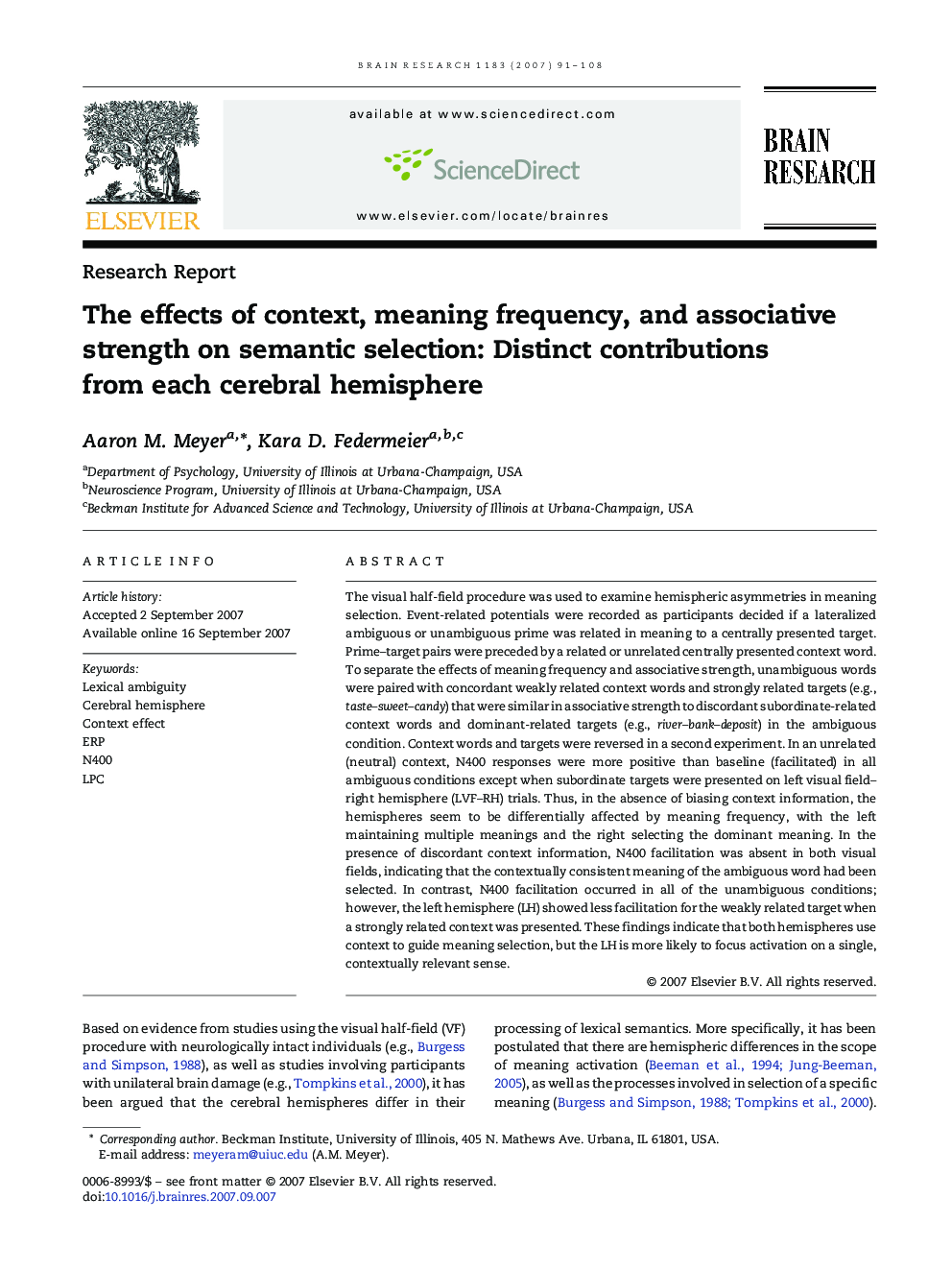| کد مقاله | کد نشریه | سال انتشار | مقاله انگلیسی | نسخه تمام متن |
|---|---|---|---|---|
| 4330432 | 1614256 | 2007 | 18 صفحه PDF | دانلود رایگان |

The visual half-field procedure was used to examine hemispheric asymmetries in meaning selection. Event-related potentials were recorded as participants decided if a lateralized ambiguous or unambiguous prime was related in meaning to a centrally presented target. Prime–target pairs were preceded by a related or unrelated centrally presented context word. To separate the effects of meaning frequency and associative strength, unambiguous words were paired with concordant weakly related context words and strongly related targets (e.g., taste–sweet–candy) that were similar in associative strength to discordant subordinate-related context words and dominant-related targets (e.g., river–bank–deposit) in the ambiguous condition. Context words and targets were reversed in a second experiment. In an unrelated (neutral) context, N400 responses were more positive than baseline (facilitated) in all ambiguous conditions except when subordinate targets were presented on left visual field–right hemisphere (LVF–RH) trials. Thus, in the absence of biasing context information, the hemispheres seem to be differentially affected by meaning frequency, with the left maintaining multiple meanings and the right selecting the dominant meaning. In the presence of discordant context information, N400 facilitation was absent in both visual fields, indicating that the contextually consistent meaning of the ambiguous word had been selected. In contrast, N400 facilitation occurred in all of the unambiguous conditions; however, the left hemisphere (LH) showed less facilitation for the weakly related target when a strongly related context was presented. These findings indicate that both hemispheres use context to guide meaning selection, but the LH is more likely to focus activation on a single, contextually relevant sense.
Journal: Brain Research - Volume 1183, 5 December 2007, Pages 91–108